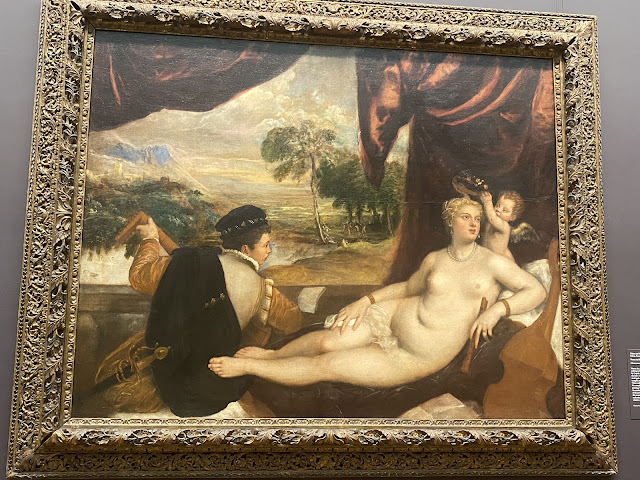Day 386 - A Cinquecento triptych

November 18, 2024 The introductory sign in gallery 609 notes that in early 16th century religious painting, large single panels came to replace polyptychs. as artists aimed to create a more direct relationship between image and viewer. The gallery is home to several of these large paintings, including an early work by Raphael, an enthroned Madonna and child surrounded by four saints, along with panels by Correggio, Perugino, Andrea del Sarto, and a couple of painters I'd never heard of before, including Andrea Solario. The work I chose to write about today, though, is a triptych painted around 1510 by Francesco Granacci, another painter hitherto unknown to me. Its small size (its central panel is perhaps 12 inches wide, the two side panels 4 or 5 inches wide, and the height maybe 30 inches) makes me think that it was created for private devotion, a supposition that the object label confirms. (I am learning something!) The central panel shows the Crucifixion...



